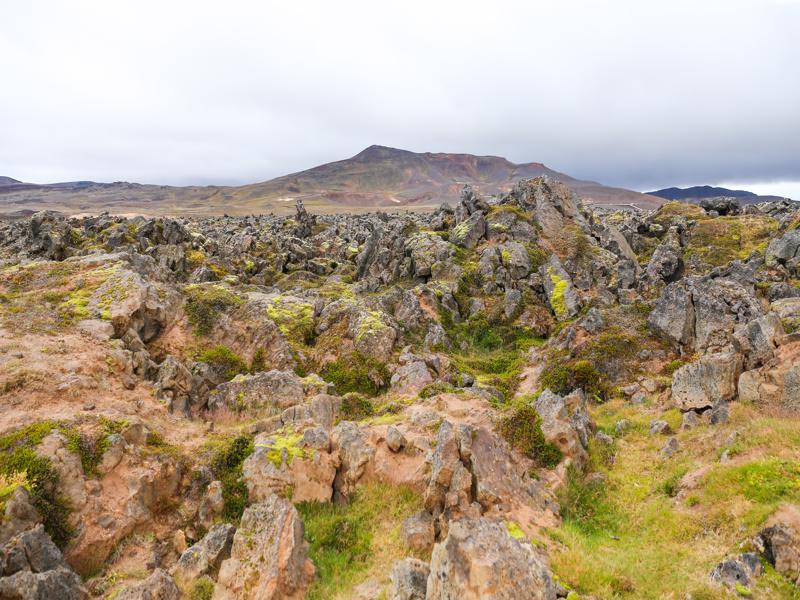Krafla Volcano
Krafla Volcano
The Krafla central volcano has been responsible for the volcanic activity in the area around Myvatn, from numerous fissure eruptions.
There have been two bouts of activity since the settlement of the island: the first during 1724-1729, which formed the Viti explosion crater and a massive flow of lava that ran from Krafla to the lake. The second, in 1975-1984, brought eleven small eruptions from an 8km long fissure at Krafla.
There is still heat in the lava from the recent eruptions and steam rises from along the fissure, where a row of small craters formed.
The Krafla site is accessed from the power station road, at its junction with road 1, 3km east of Reykjahlid. Drive past the power station, up to a steep hill and you will find the car park on your left.
From the car park and toilets, there's a one-hour circular walk through the lava to the fissure, passing colourful mud pools. It is also worth climbing Leirhnjukur, the colourful hill south of the lava, as it gives a panoramic view over the whole area. As you walk from the car park, notice the fissures marking the subsidence and rifting that occurred during the eruptions.
The Víti explosion crater, 300m in diameter, is another interesting site, located 500m further up the power station road. From the parking area, walk to the crater rim and peer into its cobalt blue lake. There is a trail around the crater rim, taking about 45 minutes and offering fine views but stay away from the edge as it is a steep drop. The crater was formed at the start of the 1724-1729 eruptions in a terrifying explosive episode, witnessed by the locals at Lake Mývatn.
The Krafla geothermal power plant is worth a visit to learn how steam is harnessed to produce power in an environmentally friendly way. The visitor centre is open daily in summer from 10 AM - 5 PM, from the 13th of June until the 31st of August.
In winter, the Krafla area may not be accessible after heavy snowfalls – please check road conditions locally. Walking through the lava may be hazardous in winter as snow can conceal fissures and holes.




